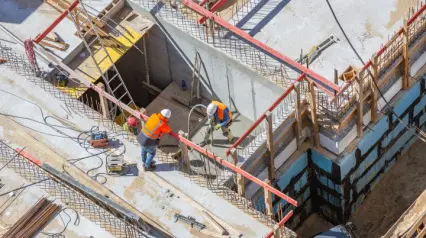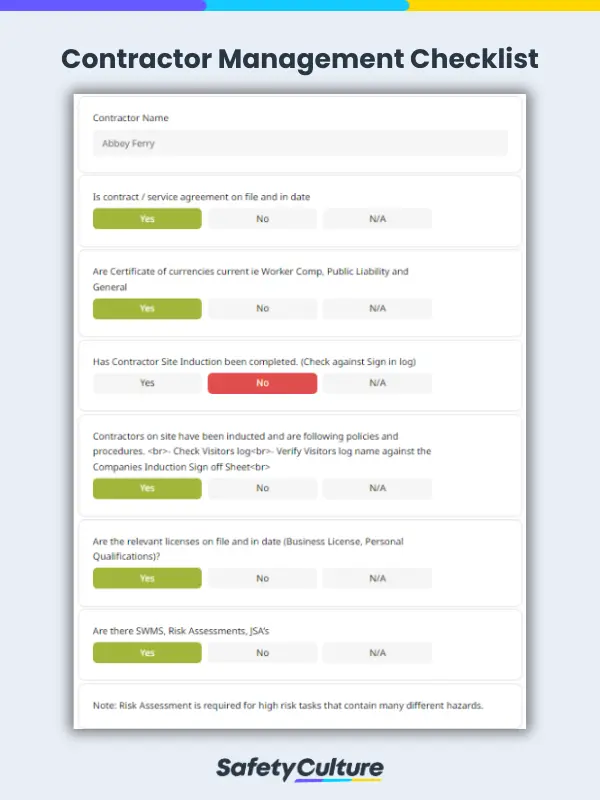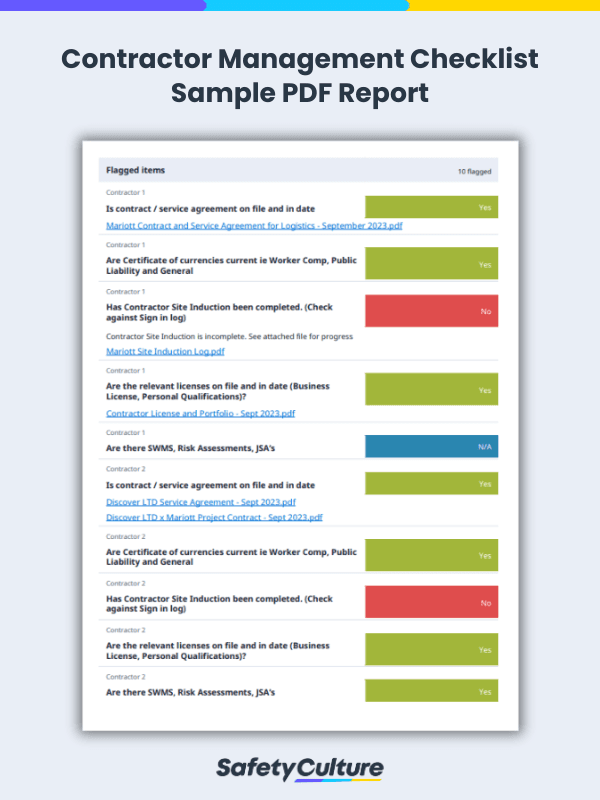What is a Contractor Management Checklist?
A contractor management checklist is a tool that helps project managers systematically coordinate and oversee external parties hired for specific tasks in a project. It encompasses a wide range of activities that involve these contractors, from prequalification to performance monitoring.
What is it Used For and Why is it Important?
The success of any project heavily relies on the efficiency of contractor management. By using a digital checklist, contractors are always on track with the project and will never miss a thing. This ensures that safety protocols are in place, where organizations can navigate projects smoothly.
- Enhanced Safety Protocols – Rigorous safety measures that are embedded within the contractor management checklist go beyond basic compliance, creating a proactive approach to worker and organizational safety.
- Compliance – The contractor management checklist serves as a comprehensive documentation tool, ensuring adherence to legal, regulatory, and contractual obligations. It becomes a proactive risk mitigation strategy by identifying and addressing compliance issues early in the project, averting potential legal complications and financial repercussions.
- Streamlined Communication – The checklist facilitates collaboration through clear communication channels, ensuring a shared understanding of project goals. Real-time updates and efficient issue resolution mechanisms within the checklist contribute to adaptability and decision-making, preventing disruptions to project timelines.
What Should Be Included in a Contractor Management Checklist?
A contractor management checklist may differ by the organization’s requirements and goals. In its basic form, there are typical items that must be included in the checklist, as follows:
Prequalification Process
Prior to contractor hiring, it’s essential to conduct a comprehensive review of their documentation, qualifications, and past project records as part of the prequalification process. This should also verify the contractor’s licenses and certifications to ensure they possess the necessary credentials relevant to the project and are aligned with industry standards.
Safety Measures
Incorporate specific safety training mandates to ensure contractors operate securely and minimize the risk of accidents or injuries. Additionally, emphasize adherence to safety guidelines and regulations to foster a safe working environment throughout the project.
Contractual Agreements
Define the scope of work precisely to prevent misunderstandings and disputes during project execution. Additionally, establish clear terms and conditions in the contract to set expectations and protect the interests of both parties involved.
Insurance and Liability
Mandate contractors to carry adequate insurance coverage to mitigate financial risks associated with potential accidents or damages. Additionally, incorporate liability protections into contractual agreements to allocate responsibilities and safeguard against potential legal issues.
How to Use a Contractor Management Checklist
Utilizing this template can aid you in efficiently managing your contractor processes in a well-structured manner. Here’s a step-by-step guide on how you can integrate this checklist into your audit process:
- Provide Basic Information – Begin by adding fundamental details about the organization, personnel involved, documentation, and the scope of the Standard Operating Procedures (SOP) for contractors.
- Conduct General Assessment – Evaluate the contractor and determine if these procedures are necessary for effective contractor management.
- Examine Critical Contractor Processes – Delve into essential contractor processes, including risk assessments, job safety analyses, and work permits. Identify any significant issues or concerns that have been raised or flagged during the evaluation.
- Summarize Your Observations – Provide a concise summary of your findings and include notes addressing any additional issues encountered during the audit. This step is crucial for capturing details that may not be explicitly covered in the checklist.
- Assign Tasks for Issue Resolution – Before finishing the checklist, take proactive measures to address identified issues by assigning tasks to responsible individuals or teams. Clear task assignments ensure accountability and swift resolution of any challenges encountered.
- Sign Off the Form – Wrap up the audit process with the signatures of the auditor and department representative. This step allows you to trace the responsible persons for the process in case the need arises.
By following this contractor management checklist, you enhance the efficiency and transparency of your processes, ensuring that your contractor management aligns with established standards and addresses any concerns in a timely manner.
Contractor Management Checklist Frequently Asked Questions (FAQs)
The frequency of updating a contractor management checklist depends on the dynamic nature of your industry, regulatory changes, and internal process modifications. As a general guideline, it is advisable to review and update the checklist annually or more frequently if there are significant changes in regulations, organizational structure, or contractor management practices.
Yes, industry-specific considerations are crucial in tailoring a contractor management checklist. Different sectors may have unique regulatory requirements, safety standards, and specific qualifications for contractors. It is essential to align the checklist with industry best practices, ensuring compliance with sector-specific regulations and optimizing contractor management processes accordingly.
Ensuring the privacy and security of contractor data in the checklist is important. To do this, organizations can implement the following measures:
- Data Encryption – Utilize encryption methods to secure sensitive contractor information, ensuring that only authorized personnel can access and decipher the data.
- Access Control – Implement strict access controls, limiting access to contractor data only to individuals who require it for their roles. This helps prevent unauthorized access and protects privacy.
- Secure Storage – Store the checklist and associated data in secure, password-protected systems or cloud platforms with robust security features.
- Compliance with Data Protection Laws – Stay informed about and comply with data protection laws relevant to your jurisdiction. This includes adherence to regulations like GDPR, HIPAA, or other regional data protection standards.




